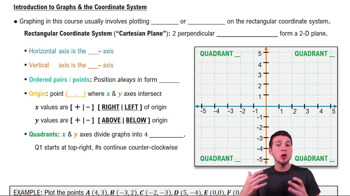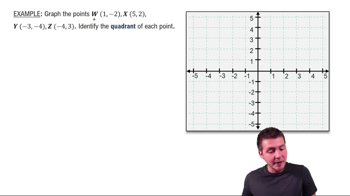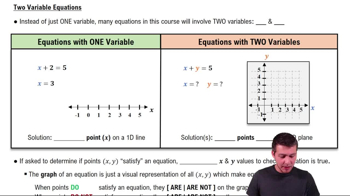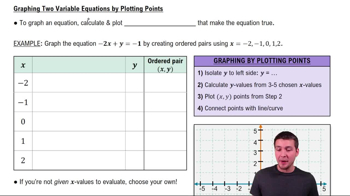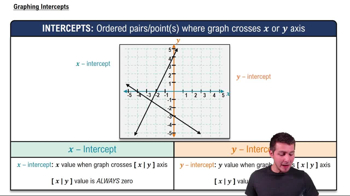Table of contents
- 0. Review of College Algebra4h 43m
- 1. Measuring Angles39m
- 2. Trigonometric Functions on Right Triangles2h 5m
- 3. Unit Circle1h 19m
- 4. Graphing Trigonometric Functions1h 19m
- 5. Inverse Trigonometric Functions and Basic Trigonometric Equations1h 41m
- 6. Trigonometric Identities and More Equations2h 34m
- 7. Non-Right Triangles1h 38m
- 8. Vectors2h 25m
- 9. Polar Equations2h 5m
- 10. Parametric Equations1h 6m
- 11. Graphing Complex Numbers1h 7m
0. Review of College Algebra
Basics of Graphing
Problem 61
Textbook Question
In the following exercises, (a) find the center-radius form of the equation of each circle described, and (b) graph it. See Examples 5 and 6. center (√2, √2), radius √2
 Verified step by step guidance
Verified step by step guidance1
Identify the center of the circle as \((\sqrt{2}, \sqrt{2})\) and the radius as \(\sqrt{2}\).
Recall the center-radius form of a circle's equation: \((x - h)^2 + (y - k)^2 = r^2\), where \((h, k)\) is the center and \(r\) is the radius.
Substitute the center \((h, k) = (\sqrt{2}, \sqrt{2})\) and the radius \(r = \sqrt{2}\) into the equation.
The equation becomes \((x - \sqrt{2})^2 + (y - \sqrt{2})^2 = (\sqrt{2})^2\).
Simplify the equation to \((x - \sqrt{2})^2 + (y - \sqrt{2})^2 = 2\).
Was this helpful?

 5:1m
5:1mWatch next
Master Introduction to Graphs & the Coordinate System with a bite sized video explanation from Patrick Ford
Start learning
